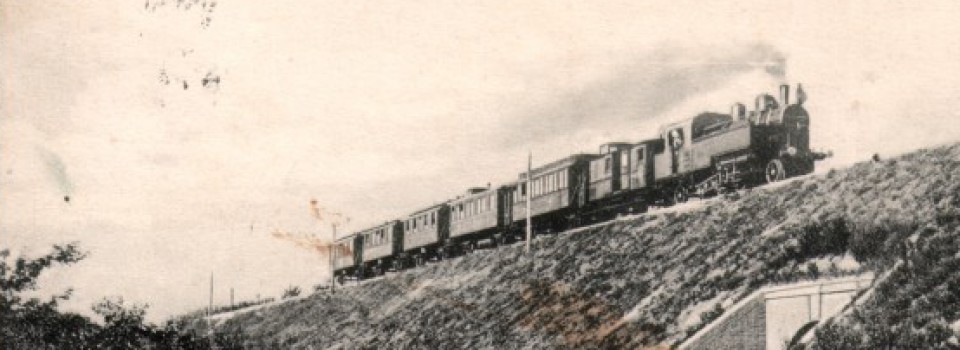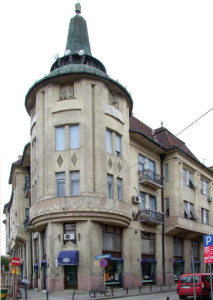This corner building was built by the projects of Pál Vadász (1874–1944). The building was completed in 1913. The purchaser of the building was the free royal town of Subotica. There were some elite apartments and the town’s atelier in it, which was let by the town’s senate that would collect the rent. On the ground floor there were shops, and for many years the building was the seat of the town’s printing house. The rounded corner is marked with a round jetty, under which roof in the height there are three reliefs with gilded mosaic background. In the first field there are two male figures with a compass, papyrus and a scale model of an ancient temple, which refer to the symbols of architecture, as well as to the Masons. In the centre there is a standing female figure with a crown on her head and two kneeling figures with a hammer and a sickle. In the third field there are a reaper and a harvester. On the mansard part of the building, facing towards the theatre, there is the glass wall of the atelier and two male figures in bas-relief. The figures are oriented towards each other: one holding a hammer leaning against the anvil, against which is leant a wheel, while the other is surrounded by the symbols of arts (lira, vase, palette and brush, bust). This composition indicates one of the core concepts of Art Nouveau: brotherhood of arts and crafts, i. e. industry, which originates from Ruskin’s “Art and Crafts” movement.
(Olga K. Ninkov)
Bibliography:
Vujnović Prćić Gordana (2002): Gradska najamna palata – A városi bérpalota. In: Krstić, Boško (ed.): Secesija u Subotici – Szecesszió Szabadkán. Književna zajednica, Subotica – Kijárat Kiadó, Budapest, 116–121.
Ninkov Kovačev, Olga (2002): Pojava nove umetnosti u Subotici – Az új művésuet megjelenése. In: Krstić, Boško (ed.): Secesija u Subotici – Szecesszió Szabadkán. Književna zajednica, Subotica – Kijárat Kiadó, Budapest, 10–23.
Rakočević–Cvijanov Maja – Džamić Neda (2011): Fasadni reljefi i skulpture u zaštićenom jezgru Subotice. Međuopštinski zavod za zaštitu spomenika kulture–Községközi Műemlékvédelmi Intézet, Subotica, 70–75.




